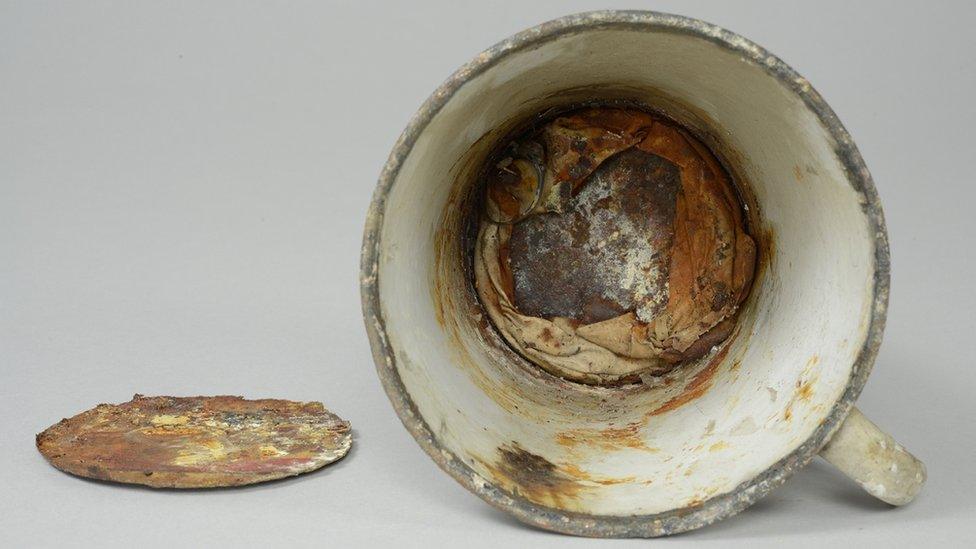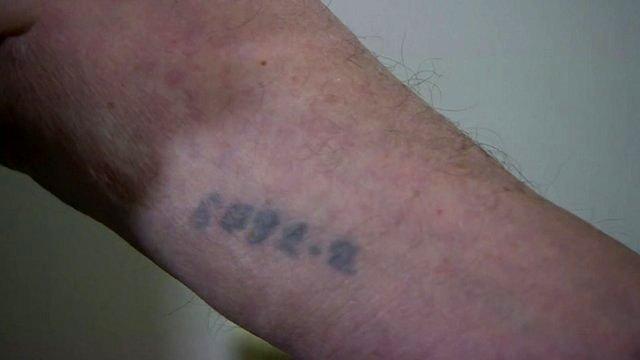Auschwitz mug reveals jewellery hidden 70 years ago
- Published

Time and rust eroded the double-bottomed cup, revealing its secrets
An enamel mug, one of thousands of exhibits at the Auschwitz museum, has been hiding a secret for over 70 years - a gold ring and necklace.
Curators discovered the jewellery during maintenance work on its collection of enamel kitchenware.
The jewellery had been concealed beneath the mug's fake bottom, which gradually eroded over time.
Many Jews hid valuable items in their luggage when they were deported to Nazi death camps such as Auschwitz.
Some 1.1 million Jews and more than 100,000 other prisoners were murdered between 1940 and 1945 at the Auschwitz-Birkenau death camp in Nazi-occupied Poland.
'Ray of hope'
The Auschwitz-Birkenau State Museum said, external the jewellery - like other objects accidentally discovered - would be carefully documented and secured, but warned that the likelihood of finding the owners was slim "because there are no traces left on the objects to help identify them".
The mug is one of 12,000 cups, pots, bowls, kettles and jugs held by the museum; items looted by German forces from the luggage of people who arrived at Auschwitz-Birkenau during World War Two.
"It turned out that one of the mugs has a double bottom," said Hanna Kubik of the museum's Memorial Collections. "It was very well hidden; however, due to the passage of time, the materials underwent gradual degradation, and the second bottom separated from the mug."
Inside, they found a woman's ring made of gold and a necklace wrapped in a piece of canvas - and tests have concluded the pieces were made in Poland between 1921 and 1931.

The ring is believed to have been produced in Poland in the 1920s

The ring and necklace are now carefully preserved - but will their owners ever be traced?
The hiding of valuable objects is repeatedly mentioned in the accounts of survivors of the camps, said museum director Dr Piotr Cywinski.
He said the Nazis "incessantly lied" to the Jewish people being rounded up - saying they were being resettled and could take a small amount luggage.
In this way, the Germans could be "confident" that they would find "the last valuables of the deported families", he added.
The fact that some of these items were hidden "proves on the one hand the awareness of the victims as to the robbery nature of the deportation, but on the other hand it shows that the Jewish families constantly had a ray of hope that these items will be required for their existence".
- Published27 January 2015

- Published27 January 2015
